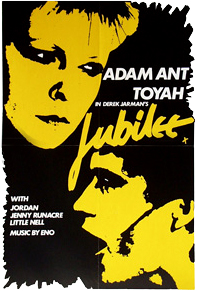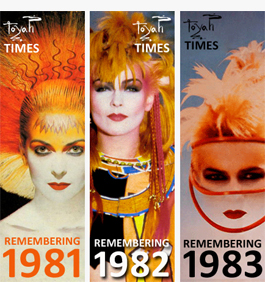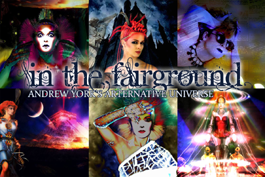The Quietus: Derek Jarman’s Jubilee Turns 40
 Grieve The Capital: Derek Jarman’s Jubilee Turns 40
Grieve The Capital: Derek Jarman’s Jubilee Turns 40
Derek Jarman’s film of visionary alchemy and edgeland punks now tells of a time before the gentrification of the capital when occulture and subculture sat side-by-side, says Adam Scovell
Released in Elizabeth II’s silver jubilee year of 1978 as a provocation seemingly towards just about everyone, it’s little wonder Derek Jarman’s second feature film, Jubilee, caused such an uproar. The Queen herself is mugged and killed for her crown early on in a Deptford edgeland, the punk movement still then raging over London is unconsciously sent up by some of the very people who were part of it, and the raw mixture of violence, conservative nostalgia, swipes at Catholicism and copious nudity makes it as anarchic as anything the director made afterwards.
Amongst this incredibly heady concoction of both successful and failed attempts at creating a feasible narrative world, however, sits something far more essential; a time-capsule of a period in London’s history when subcultures grew overtly and naturally due to the city’s many affordable, derelict areas.
The film begins with Elizabeth I (Jenny Runacre) and her alchemist, Dr. John Dee (Richard O’Brien), who conjures forth Ariel (David Brandon), William Shakespeare’s magical being from The Tempest. Thanks to Ariel’s powers imbued into a crystal, the trio travel forward through the cascading years, from the sixteenth-century to a brutal, dystopian vision of 1970s London. The city is ravaged but alive, the streets housing violent groups of punk girl-gangs who fend off police harassment and cause mayhem. Prams are burning and people are killed whilst bands, including Adam And The Ants and Siouxsie And The Banshees, play endlessly on television. Ritual violence is spreading as is this new form of music, ready to be co-opted by financial maniacs to sell to a brainwashed youth; providing further wealth to buy up the newly empty Buckingham Palace and turn it into a recording studio. The film is perhaps more famous for its string of cameos: Adam Ant, The Slits smashing up a car, Toyah Willcox playing Mad and too many others to name. But it’s more than the sum of its pop-culture reference points.
• Continue reading at The Quietus.










